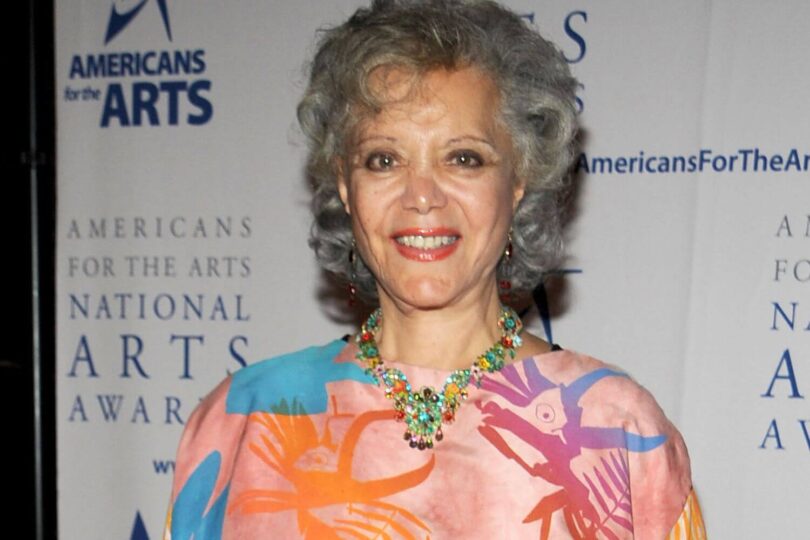Ellen Holly, a pioneering figure in American television, passed away at 92, leaving behind a legacy that reshaped the landscape of the entertainment industry. Her career, spanning several decades, was marked by groundbreaking roles and significant contributions that challenged societal norms and pushed the boundaries of storytelling in American media.
- RELATED: Who Is Niall Horan’s Girlfriend? Meet Amelia Woolley
- RELATED; Who is Shane Gillis’ Girlfriend? His Relationship History Explored
- RELATED: Who Is Austin Reaves’ Girlfriend? Meet Jenna Barber
- RELATED: Who Is Bobby Flay’s Girlfriend? Meet Christina Pérez
Table of Contents
Ellen Holly Net Worth
Ellen Holly’s net worth, estimated to be between $3 million and $4 million, was a reflection of her successful career in the entertainment industry. It stands as a testament to her talent and the demand for her presence in both theater and television.
Early Life and Inspirations
Born in Manhattan in 1931, Ellen Holly’s journey began in the diverse environment of Queens, New York. Her early life in this melting pot of cultures and ideas undoubtedly shaped her perspectives and artistic inclinations. A graduate of Hunter College, Holly’s academic background laid a strong foundation for her intellectual and artistic pursuits.
Broadway Beginnings
Holly’s entry into the world of acting was through the prestigious stage of Broadway. Making her debut in 1956 with “Too Late The Phalarope,” she showcased her formidable talent early on. Her time on Broadway saw her involved in several acclaimed productions, including those at the Joseph Papp New York Shakespeare Festival, where she honed her craft alongside some of the best in the industry.
A Role That Made History
Ellen Holly’s most impactful role was in the soap opera “One Life to Live,” where she portrayed Carla Benari Hall from 1968 to 1985. This role was revolutionary for its time, as Holly, a light-skinned Black woman, played a character who initially passed as white before embracing her Black heritage. The storyline explored complex themes of racial identity and prejudice, making a bold statement in an era when such narratives were rare in mainstream media.
Breaking Barriers in Television
Holly’s character in “One Life to Live” wasn’t just groundbreaking in terms of racial representation; it also introduced the challenging topic of interracial relationships to American households. This bold portrayal was met with mixed reactions, ranging from critical acclaim to societal backlash, including a Texas station refusing to air the show.
A Versatile Career Beyond “One Life to Live”
Ellen Holly’s talent extended beyond her role in “One Life to Live.” She was also known for her performances in “The Guiding Light,” where she played Judge Frances Collier, and in “In The Heat of the Night” as Ruth Peterson. Her career spanned into the early 2000s, including a role in the TV movie “10,000 Black Men Named George” in 2002.
Life After the Spotlight
Following her retirement from acting, Holly took a different path, choosing to work as a librarian at the White Plains Public Library. This transition from the glamorous world of acting to a community-focused role as a librarian speaks volumes about her character and her desire to connect with people in more intimate settings.
The Final Chapter
In her later years, Holly lived a life away from the public eye, focusing on her personal life and interests. Despite never marrying, she is survived by grand-nieces and extended family members. Respecting her wishes, there was no funeral service, but her memory lives on through her work and the lives she touched.
- RELATED: Billie Eilish Loses Followers on Instagram After Openly Discussing Her Sexuality
- RELATED: Cardi B and Her Husband Offset Unfollow Each Other on Instagram
- RELATED: Adult Film Actress Sophie Anderson Passes Away at 36
- RELATED: Lupita Nyong’o Spotted Spending Time with Joshua Jackson After Split
A Trailblazer Remembered
Ellen Holly’s passing signifies the loss of a trailblazer in the entertainment industry. Her roles, especially in “One Life to Live,” not only entertained but also provoked thought and initiated conversations about race and identity in America. Her work challenged stereotypes and opened doors for actors of color in the industry.
Ellen Holly’s legacy is not just that of a successful actress but also of a woman who dared to dream and challenge the status quo. Her story is a powerful reminder of the impact one individual can have in shaping cultural narratives and breaking down barriers.













